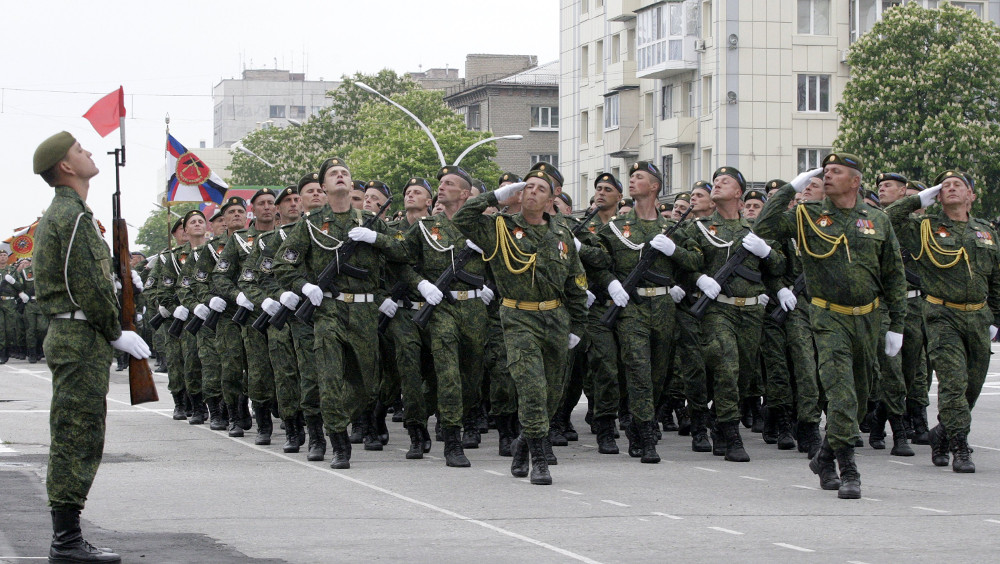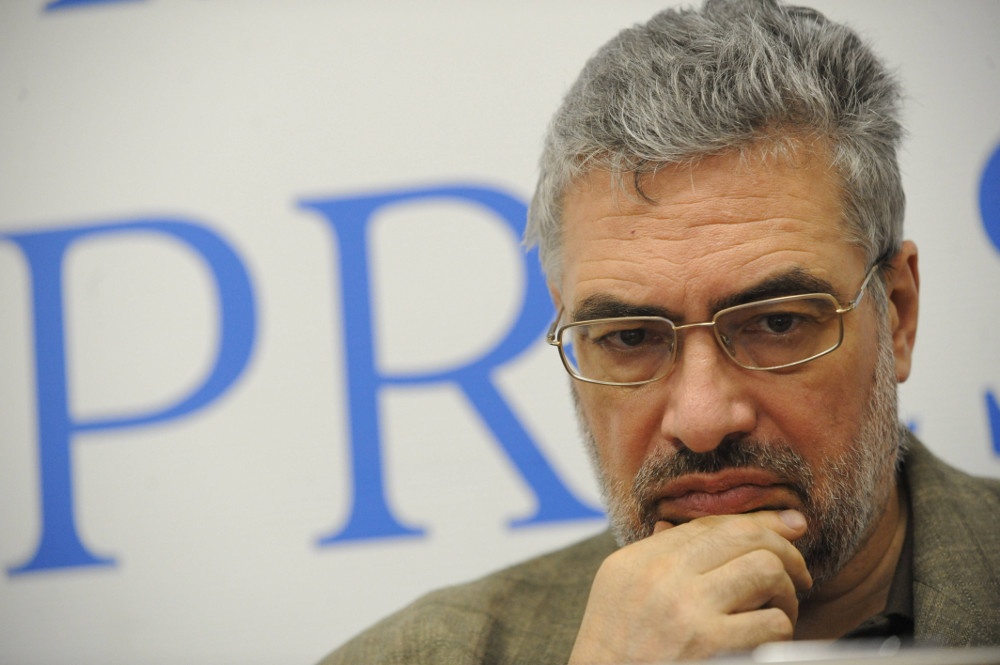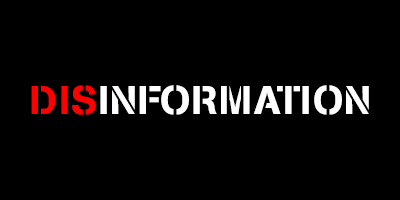THE WARSAW INSTITUTE REVIEW
Date: 12 March 2018 Author: Grzegorz Kuczyński
“Peacemaker” Putin
Russia is interested in suspending the conflict in the Donbass region, at least until the presidential election in March 2018. In the long term, their optimal outcome is to repeat the “Moldova scenario” in Ukraine. Successive proposals from Moscow serve this purpose. History teaches us that Russia should not be believed under any circumstances. In the words of the Ukrainian President Petro Poroshenko – with Moscow you must always be prepared for the worst. Any Kremlin initiative, even those that at first seem peaceful, should be treated with extreme suspicion.

Russia’s strategic goal is to keep Ukraine in its sphere of influence. The old geopolitical maxim in this part of Europe says that without Ukraine, Russia cannot be a superpower. Since Ukraine regained independence in 1991, Moscow has never been as far from this objective as it is now. The price of tearing away part of Ukraine’s territory (the annexation of Crimea and occupation of one-third of the Donbass) has been the loss of influence over Kiev. It is not important for Russia to directly control a smaller or greater part of Ukraine, if it means that at the same time the vast majority of the country, together with its capital, gravitates towards the West.
The Kremlin can implement one of several possible strategies towards Ukraine. War is unrealistic, as it would lead to new sanctions from the European Union and even worse relations with the United States. The scenario of Russia’s complete exit from the Donbass seems equally unlikely. It would be seen as a capitulation and Vladimir Putin cannot show weakness in this matter, especially in Russia, where the reception of this fact would be more important than internationally. The third strategy is to maintain the status quo. In the long run, this would not be worth it for Russia. Even if they were playing the waiting game before, thinking that in a matter of months, or one or two years at most, there would be a serious crisis in the new Ukrainian government, they are now convinced that time is in Kiev’s favor, not Moscow’s.
It seems most likely that Putin will seek to recreate the “Moldova scenario”. Voters from Transnistria, a region that rebelled in the early nineties against the authorities in Chisinau and broke off from Moldova after a bloody conflict, effectively became a Russian exclave, and helped to elect pro-Russian President Igor Dodon. Residents of the Russified and pro-Russian region, over which the Moldovan government has no real influence, have a real impact on the political course of Moldova, in exchange for the illusory, formal attachment to the country (unfortunately, some of Moldova’s political elites agreed to this).
The implementation of the political component of the Minsk agreements would mean the creation of such a situation in Ukraine. Residents of the region beyond Kiev’s control, moreover under the control of Ukraine’s enemy, would be able to vote for not only district officials, but also deputies of the Verkhovna Rada (Ukrainian parliament). The creation of a strong, pro-Moscow lobby will lead to attempts to block reforms and derail the pro-Western course of Ukraine’s foreign and security policy. Grinding Ukraine’s progress to a halt halfway between the times of ousted President Yanukovych’s “neutrality” and oligarchization, and increasing Europeanization, will essentially mean a retreat and return to a “grey zone”, in reality to Moscow’s sphere of influence.
The problem is that, from the start, Kiev was in no rush to make the changes called for in the Minsk agreements. The Russians have therefore adopted the strategy of portraying Ukraine as thwarting the peace plan and urged the West to exert pressure on Kiev to implement the Minsk resolutions more quickly, for instance by granting special status to the Donbass. That was not very effective – until Donald Trump’s election victory. Moscow was convinced that it would now be possible to conclude an agreement with Washington about Ukraine, to make a “geopolitical deal”. After a year into Trump’s presidency, however, it must be stressed that the Russians have been very disappointed with the attitude of the new administration regarding Ukraine. There have been many attempts to negotiate, pressure, and make various offers, but recent months have clearly shown that Putin will not be able to play the “American card” against Ukraine.
If there were any illusions, they should have been dispelled by the nomination of the new Ambassador of the United States to Russia, Jon Huntsman Jr., and the appointment of Kurt Volker as the U.S. Special Representative for Ukraine. Upon taking the position, Huntsman announced that the first step in the normalization of Russian-Ukrainian relations should be to return control over the internationally recognized borders of Ukraine back to Kiev. “This is an issue not only with the United States, but also with Europe, Canada and virtually every other developed country,” said Huntsman. On August 24, during a visit to Kiev, United States Secretary of Defense, James Mattis, said that the U.S. will continue to provide assistance to Ukraine and that the possibility of transferring offensive weaponry to Ukraine was being considered. He also said that after discussions with Ukrainian partners he would draw up “specific recommendations in this matter”. On September 5, Russian President Vladimir Putin responded, “Such a decision will not change the situation, but the number of victims may increase,” warning against sending American weapons to Ukraine.

Furthermore, the U.S. position on the conflict between Russia and Ukraine was re-emphasized during Rex Tillerson’s visit to Europe in December. In Vienna, at the conference of the Organization for Security and Cooperation in Europe (OSCE), the U.S. Secretary of State declared: “We will never accept Russia’s occupation and attempted annexation of Crimea. Crimea-related sanctions will remain in place until Russia returns full control over the peninsula to Ukraine.” He added: “In eastern Ukraine, we join our European partners in maintaining sanctions until Russia withdraws its forces from the Donbass and meets its Minsk commitments.” The chief American diplomat gave notice that: “Russia is arming, leading, training and fighting alongside the anti-government forces. We call on Russia and its proxies to end its harassment, intimidation and its attacks on the OSCE Special Monitoring Mission.”
The Kremlin’s Surprising Maneuver
The proposal to introduce United Nations peacekeeping forces to the Donbass has proved that the Kremlin has reconciled itself to the unlikelihood of an “arrangement” with the Trump administration. Putin only changed his mind about the peacekeepers after the U.S. began seriously considering sending offensive weaponry to Ukraine. It is no coincidence that the Russian president made his “peace” proposal at the same press conference where he threatened that handing over weapons to Ukraine would trigger an escalation of the conflict, because the separatists would not stand idly by as their adversaries were reinforced. The Kremlin wants to achieve something in this situation in talks with Germany and France – the idea of peacekeeping forces appears to be an expression of goodwill and readiness for dialogue. It weakens Kiev’s position and gives Putin time, at least until the presidential election in March.
At present, there are about six-hundred OSCE observers in Ukraine, who monitor whether the peace agreements, concluded by Ukraine and Russia under the auspices of France and Germany are being respected. Putin uses the army to escalate conflict on the battlefield and then turns to the West with what he presents as de-escalation proposals.
This is why, since 2015, Kiev has explored the idea of deploying UN forces in the Donbass as an alternative to the Minsk agreements. However, it was only in July 2017 that President Poroshenko presented such a project during a telephone conversation in the Normandy format (negotiations with the participation of Angela Merkel, Emmanuel Macron, Vladimir Putin and Petro Poroshenko). In August, the Ukrainian president announced that a detailed plan would be presented at the September session of the UN General Assembly in New York. It was clear that the project had no chance of passing through the Security Council because of Russia’s opposition.
So it was even more surprising when, on September 5, the Kremlin suddenly changed its position on the presence of UN peacekeeping forces in the Donbass. This way, Putin took the initiative away from Poroshenko. Moscow has met Kiev’s expectations on the surface. Although both sides talk about an international UN peace mission, the details of the proposal show that there are two completely different plans. In the Russian concept, peacekeeping forces are to complement the realization of the Minsk agreements by supporting their implementation; in the Ukrainian version, they are to replace the Minsk agreements.
Kiev has proposed imposing a strong peace mission consistent with Chapter VII of the Charter of the United Nations. Moscow however has suggested a seriously limited mission based on the terms of Chapter VI of the Charter. The Ukrainians want a repeat of the peace mission in Bosnia and Herzegovina (1994–1995) led by NATO under the UN flag. The Russians would only allow a lightly armed UN contingent, limited to the front line, which would make it impossible to protect the OSCE mission, which operates in the entire conflict zone. The Ukrainians are in favor of a “fully-armed” peacekeeping mission and are against the participation of Russian military personnel.
Although both proposals provide for a full ceasefire and the withdrawal of heavy weapons, the Russian version only concerns the front, and not the entire conflict zone. The U.S. Special Representative for Ukraine, Kurt Volker, said that this proposal is disconcerting. According to the American diplomat, only the UN mission’s access to the entire area would ensure security for people who live in conflict-affected territories, and would “provide access for Ukrainian authorities”, which in turn would allow the local elections, provided for by the Minsk agreements. According to Volker, elections in the Donbass will not be possible until Ukraine regains full control over this area, which today is controlled by pro-Russian separatists.
Moscow and Kiev also differ on another issue. Russia wants the consent of the rebels in the so-called “People’s Republics” on the makeup of UN forces and details of their deployment, while the Ukrainian authorities are against this. Several details of Russia’s proposal for the UN mission in the Donbass have disturbed Kiev. For example that it would operate for six months at first, but only once troops and equipment are withdrawn from the front separating the opposing forces. The Russians also want to include a statement in their resolution that the settlement of the conflict in the Donbass is only possible with the full implementation of the Minsk agreements.
No Chance for a Breakthrough
If the UN peacekeeping mission comes to fruition, it will mean the end of the war in the Donbass by military means, and the conflict will be transferred to a purely political plane. Moscow will demand that Kiev fulfill its Minsk obligations: amnesty for separatists, changes in the constitution towards federalization and accepting deputies from separatist regions to the parliament. Russia will also want sanctions lifted in exchange for the introduction of peacekeeping forces. Kiev would have to take responsibility for the war-devastated region through heavy subsidies, in the face of high unemployment and a disloyal population under Moscow’s influence. There is also a serious risk that Russia will try to legalize its forces currently stationed in the Donbass (as in Transnistria) as part of the UN peacekeeping contingent. From Moscow’s point of view, the benefit of the appearance of the “blue helmets” will remove the risk of a “Croatian scenario”, i.e. a sudden, decisive Ukrainian attack on the occupied regions, as Croatia did taking back Krajina from the Serbs in 1995. Russia will therefore have to keep large forces in reserve for a quick intervention in the event of a Ukrainian attack.
The goal of Vladimir Putin’s proposal is to create divisions among his enemies and solidify his own achievements. Initially, Moscow wanted to station international troops along the demarcation line between the Ukrainian army and the separatist forces. According to the Ukrainian government, this is Putin’s method of consolidating the situation that Russia has created on the ground. Nevertheless, Ukraine’s international allies have taken this proposal seriously. On September 11, German Chancellor Angela Merkel called Vladimir Putin and persuaded him to make concessions on one point; Putin agreed that international forces should be deployed beyond the front line. This has led Western governments to believe that genuine negotiations with Moscow are possible. The Foreign Minister of Germany, Sigmar Gabriel, said that Putin’s initiative demonstrates a change in Russia’s policy in Ukraine. Never mind the difference of opinion on many details between Berlin and Moscow. It is unlikely that the Russians will make concessions though, as it is a matter of political effect and an attempt to outplay the West.

How little can be expected from Moscow’s “peace” proposal was shown by Volker’s November 13 meeting with Vladislav Surkov, Putin’s adviser. The Russian side rejected twenty-six of the twenty-nine points of Volker’s proposal. Negotiations are at an impasse, primarily because Russia will not recognize the rules requiring a ceasefire, the withdrawal of heavy armament from eastern Ukraine and border access. Russia will still not admit that it even has forces stationed in eastern Ukraine, let alone withdraw them. Both Volker and leaders in Kiev believe that there should be no Russian soldiers in the UN mission. It cannot be ruled out that Russia will agree to allow the mission access to the entire region, but on the condition that the majority of the soldiers are from the countries of the Collective Security Treaty Organization (CSTO), which brings together many post-Soviet allies of Moscow and sympathetic Western countries.
Vladimir Putin is playing a game – his “concession” on the deployment of the “blue helmets” beyond the front line, may have given Angela Merkel the illusion that the Kremlin is ready for further compromises. In the meantime, what kind of a concession is it to place forces across the whole territory covered by the OSCE mission, since there is still no mention of protecting civilians or access to the Ukrainian-Russian border? Putin will never agree to a peace mission on terms set by Ukraine or the West. That said, he is already presenting himself as a “peacemaker” – Russia has submitted a motion for a resolution to the UN Security Council. This is also a part of its dealings with the U.S. on various issues, not only in Ukraine, but also in Syria, North Korea and China, which Putin has raised in his election campaign.
There is no way the West will accept the Russian proposal in its current form though. Moscow must know this. However, it may be the beginning of a deal. If one is agreed upon, a full ceasefire will come into force, a peace mission will be deployed throughout the Donbass, and the Russian army will leave. But at that moment, Western pressure for implementing the Minsk agreements will shift from Moscow to Kiev. So far Ukraine has resisted, arguing that it is impossible to conduct free elections under foreign occupation in conflict zones. In the meantime, the presence of the UN peacekeeping mission means the end of the occupation and of the conflict. It is also an argument for lifting sanctions (those not related to Crimea) and the transfer of financial responsibility for the Donbass to Kiev.
Even if Kiev gets what it wants – a full-fledged UN peacekeeping mission in the conflict zone and along the border with Russia, it will not end the conflict since in accordance with Chapter V of the United Nations Charter, peacekeeping operations are very limited. Russian analyst Pavel Felgenhauer is under no illusions about this. In an interview with Radio Free Europe he said: “Peacekeepers under Chapter V drive around in white jeeps, write reports, and observe. They carry a firearm, but can only formally use them for self-defense, although in truth they never use them. If gunfire erupts, they first hide, and then give themselves up. Under the best scenario, some 200 will come, maybe up to a thousand from Bangladesh, Senegal and elsewhere in the Third World, and they will be there, working next to the OSCE monitors. They won’t be trying to determine [who is to blame for] anything but merely monitoring. Ukraine will gain nothing from it.”
The Better is the Enemy of the Good
Another option cannot be ruled out: Putin only raised the issue of the UN mission for tactical and short-term reasons to convince the U.S. not to transfer weapons to Ukraine. The “blue helmets” proposal could be scrapped at any time under the guise of disagreement over some detail. Moscow’s goal is also to torpedo Kiev’s plan to deploy peacekeepers and simultaneously saddle Ukraine and the U.S. with the responsibility for the expected failure of the Russian proposal. After four years of conflict, Moscow has nothing left to show for its efforts. It has made new enemies, not friends. Separatists control only four percent of Ukraine, while the rest of the country has unified. Federalization or neutrality is out of the question. Another reason for Putin’s activity is the cost of war and subsidies to the “People’s Republics” – over $1 billion annually.
What may have prompted the Kremlin to come up with the idea of a “UN peacekeeping mission”, now should suggest to Kiev that they should maintain the status quo. This means maintaining the Western sanctions imposed on Russia and the political and largely economic isolation of the occupied portion of the Donbass. It also means excluding most of the traditional pro-Russian electorate from the Ukrainian national elections – which led to the election of the most pro-Western parliamentary majority, president and government since 1991. For economic reasons, the current state of affairs also weakens many oligarchs, who have so far held with Moscow, and certainly are not interested in reforms. Above all, this is an economically uncomfortable situation for Russia, which would gladly pass on the burden of maintaining and rebuilding densely populated industrial areas devastated by war. Finally, the last, particularly political, advantage for Kiev is as long as we have a state of war (remember that there is only a ceasefire in the Donbass), President Poroshenko and Minister of Internal Affairs, Arsen Avakov, can use this to unify society against a common enemy and to delay reforms (although it is now less advantageous for Ukraine).
The best tactic would be to generally engage in the same behavior as over the last three years. There is no rush for the changes provided for in the Minsk agreements (change of the electoral law, amnesty for separatists, codifying the act on the special status of the Donbass into the constitution). It must be stressed that the “People’s Republics” are considered occupied territories by the U.S. and the EU. No steps can be taken that can be used to legitimize the regimes of these puppet states in Donetsk and Lugansk. Therefore it is important to remind people of this and emphasize that these are really areas under Moscow’s control. From the very beginning, the Kremlin has been seeking to present the conflict in the Donbass to world opinion as an internal Ukrainian conflict. It must be pointed out clearly and consistently that this is a conflict between Ukraine and Russia. As long as Russian soldiers, or troops commanded and equipped by Russians, are stationed in the Donbass, Kiev has plenty of room for maneuver, if only in negotiations with the West about implementing the political points of the Minsk agreements.
That is why the conditions under which the United Nations peacekeeping forces would enter the Donbass are so important. Moscow has used the “blue helmets” more than once to consolidate its territorial gains. It cannot be allowed to happen again. The Russian proposal for the UN mission is a trap set for Ukraine – Putin can tell the West that he is seeking a peaceful solution and that it is Kiev’s fault that the Minsk agreements are still only on paper. That is why details are so important – especially the question of UN forces entering up to the Ukrainian-Russian border. There can be no concessions in this matter. It is better to resist pressure, including from the West, than to later face the situation where allies determine that since there are already international peacekeeping forces in the Donbass, the area should be included in the political life (including through elections) of Ukraine. This would allow the West to wash their hands of the issue, claiming that the conflict is over and Kiev has regained the Donbass.
All texts published by the Warsaw Institute Foundation may be disseminated on the condition that their origin is credited. Images may not be used without permission.














